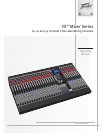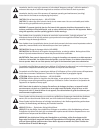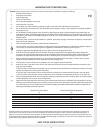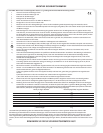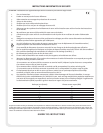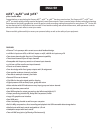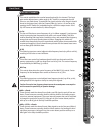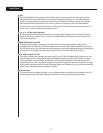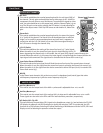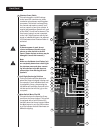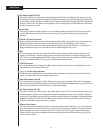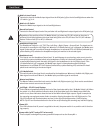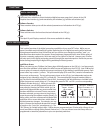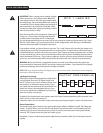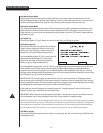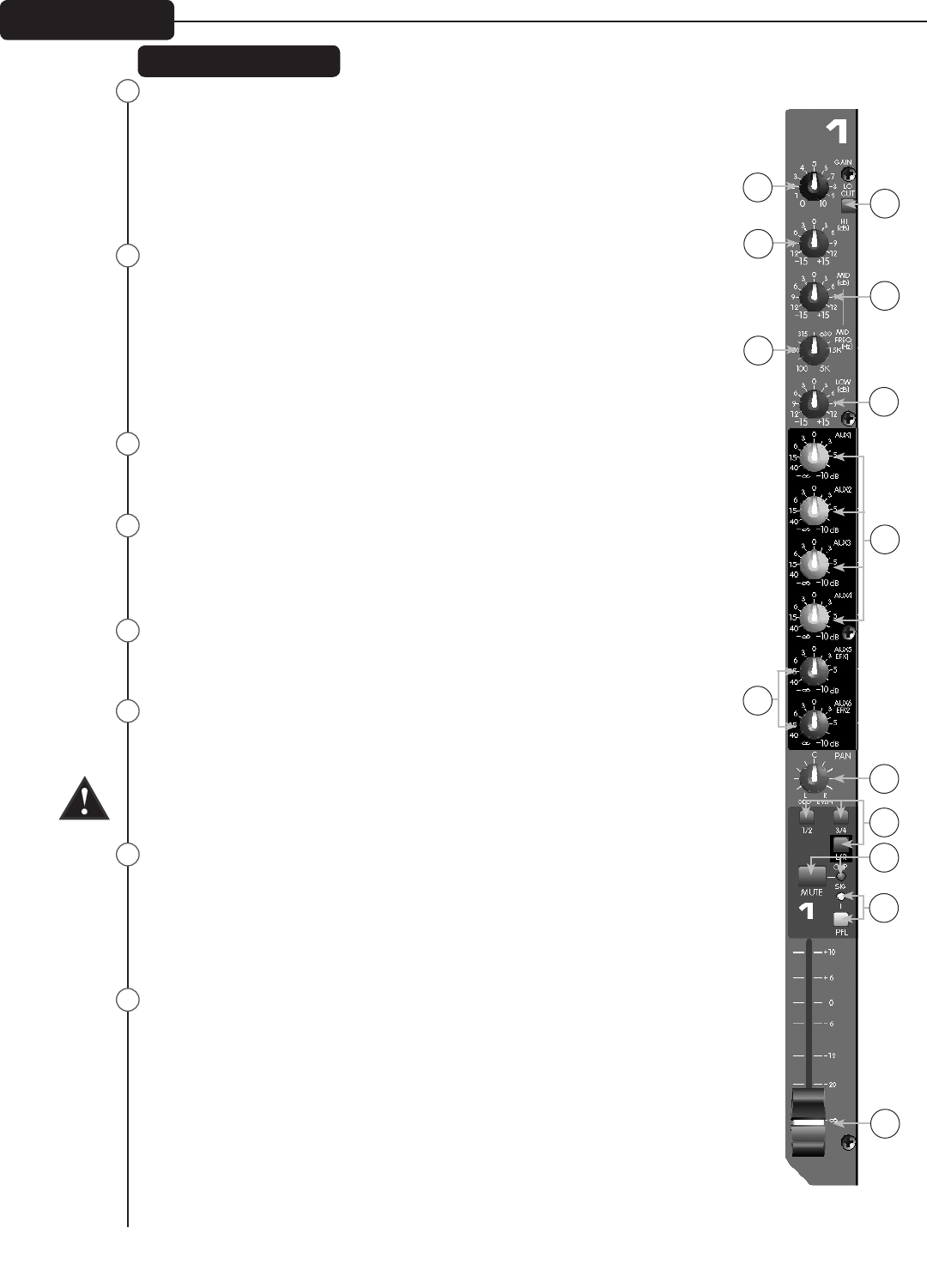
Gain
This control establishes the nominal operating level for the channel. The input
gain can be adjusted over a wide range (0 dB – 60 dB) to compensate for soft
voices or very loud drums. To maximize the signal-to-noise ratio, the gain should
be set to the proper level, with the Channel Fader (13) set to 0. It can be set by
pressing the PFL Switch (12) and adjusting for 0 dB on the output meter. If the
clip LED comes on and remains lit, reduce the gain.
Lo Cut
The low-cut lter has a corner frequency of 75 Hz. When engaged‚ it can improve
clarity by removing low frequencies that make a mix sound muddy. This lter
reduces handling and stage noise, breathing noise, and unwanted low frequency
energy that can rob your sound system of power. Engaging this switch will
remove those frequencies from the system and restore power where needed. We
recommend engaging it for all channels except those with the lowest bass tones
such as Bass guitar and Kick drum.
Hi EQ
This shelving type tone control adjusts treble frequency levels (±15 dB at 10 KHz),
resulting in less noise or more brilliance.
Mid EQ
This active tone control is a bandpass (peak/notch) type that varies mid-fre-
quency response by ±15 dB in a range from 100 Hz to 5 kHz. The center frequency
is controlled by the Mid Freq (5) control.
Mid Freq
This control determines the center frequency of the Mid EQ (4) control. Center
frequency for the bandpass lter can be set from 100 Hz to 5 kHz.
Low EQ
This shelving-type tone control adjusts bass frequency levels (±15 dB at 70 Hz),
adding depth to thin signals or clarity to overly thick signals.
Caution: Excessive low frequency boost causes increased power consumption
and increases the possibility of speaker damage.
AUX 1-4 Sends
These controls send the channel’s pre-fader, post-EQ signal to each of four aux
buses. These buses are normally used for monitor sends or for feeding a sepa-
rate mix to external equipment. There are internal jumpers that can be switched
to change the send point to pre-EQ. Unity gain is at the center detent position
with up to 10 dB of gain in the fully clockwise position.
AUX 5-6/EFX 1-2 Sends
These controls send the channel’s post-fader signal to each of two aux (effects)
buses. These buses are normally used for effects sends or for feeding the inter-
nal effects processors. Unity gain is at the center detent position with up to 10
dB of gain in the fully clockwise position.
8
Front Panel
1
2
3
4
7
5
6
8
MONO INPUT CHANNELS
2
3
4
1
6
5
8
7
9
10
11
12
13



